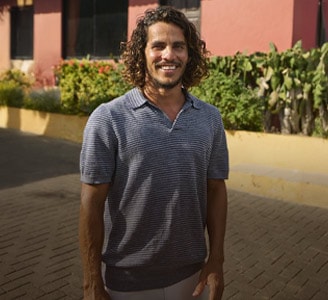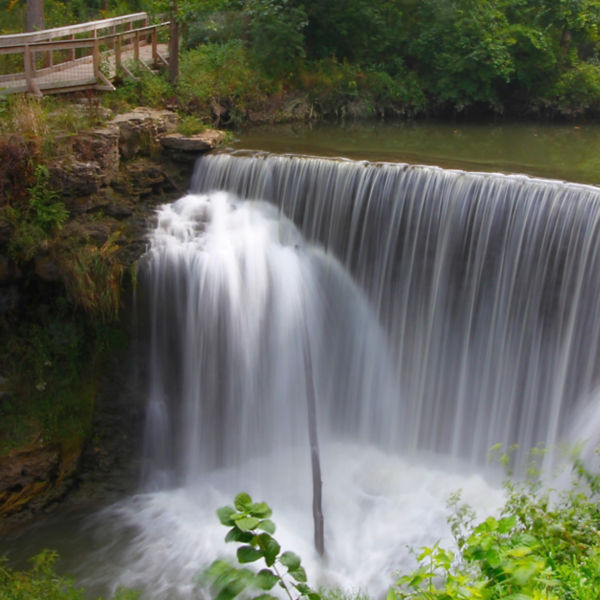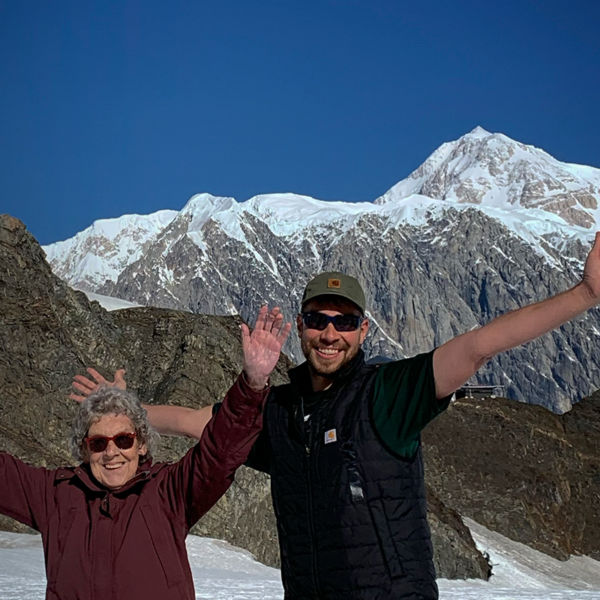
Columbus cyclists are fortunate: The city has two trails that can be linked to create a scenic and traffic-free loop around town. The 30-mile route includes trails that parallel the river and a creek, are lined with parks, and pass fields and woods where you might see deer, hawks, and herons.
The Olentangy Trail and Alum Creek Trail run north-south, and there are safe ways, on low-traffic streets, to connect the two. The best connecting routes are the Olentangy-Alum Creek Connector up north, and from Bexley to Columbus Commons and the Scioto Mile farther south. Both of them traverse mostly residential streets, and the southern connector goes through a scenic neighborhood with stately homes and parks.
The mostly level loop is great for cyclists of all levels, and it’s especially fun for out-of-town guests as it really shows off the highlights and history of Columbus. The signed trails are easy to follow in most places, but there are a few confusing spots and route options, so use this guide to stay on track. (You’ll find the loop on navigation apps, but most tracks do not have the best connectors described here.)
Starting Points
Since it’s a loop, there are several places to begin. The route described here starts in the big parking lot of Whetstone Park in Clintonville. As the route loops around (clockwise) from Whetstone, some of the many other places to start include: Woodward Park Middle School on Karl Road; Innis Park, off of Innis Road; Wolfe Park in Bexley; and downtown, along the Scioto Mile. These are just a few of the options; depending on where you live, you might also just want to ride to the loop from home.
Launching the Loop
Starting at Whetstone, head west to the river and the Olentangy Trail, where you’ll make a right turn and go north, upriver. At 2.5 miles on the Olentangy Trail, there’s a bridge across the river. This is the start of the easterly Olentangy-Alum Creek Connector. Cross the bridge and start following the green signs. The route is mostly well-signed, but be aware of a few places where it’s not.
The first point of confusion comes a couple miles after the bridge, where there’s a sign with a left arrow for “Kanawa Ave.” So, you take the next left, correct? Nope. The second left is Kanawa. Many first-time riders on the connector have mistakenly turned left on the first left, which is Rosslyn Avenue.
Go across High Street, and, at the 5.5-mile mark, ride up and over the pedestrian bridge above Interstate 71. The two sides of the bridge make for the steepest section of this entire ride.
Connecting to the Creek
At about the 7.5-mile mark, the green signs give you a choice: Take a left and head to Cooper Park, which is on the Alum Creek Trail, or take a right and head to Parkridge Park, also on the Alum Creek Trail. The route to Parkridge Park is a much nicer route, as the Cooper Park route goes through what seems like an endless string of strip malls and shopping centers.
The next point of confusion comes at the 9.5-mile mark. This is where you make a right turn, onto a short, downhill connector path to the Alum Creek Trail. However, there’s no green sign with an arrow pointing that way and it’s easy to glide past. Look for the Westerville Woods and Alum Creek signs, and go right onto the connector path. You’ll hit the Alum Creek Trail in a few hundred yards and make a right (south). If you hit the 10-mile mark and aren’t yet on the Alum Creek Trail, backtrack a bit and look for this connector path.
Over the next few miles, enjoy a wonderful section of the Alum Creek Greenway, as you parallel Alum Creek most of the way. At Mile 16, there’s an historical marker that describes how the creek was an important part of the Underground Railroad—it was a “liquid line of freedom” used by escaped slaves, who waded through the creek’s waters to throw off the bloodhounds of the bounty hunters tracking them.



































